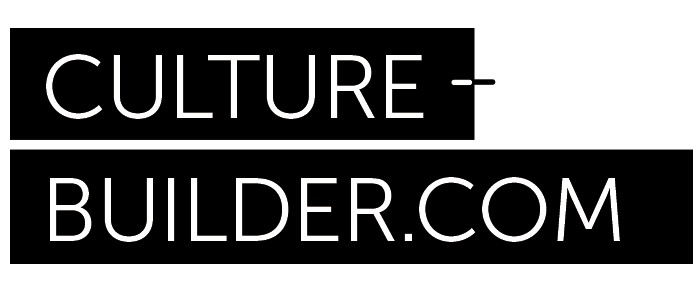By Simon D’Arcy
When I was nineteen years old, I had a ‘game-changing’ moment. On the third day of a personal growth workshop in Santa Barbara, CA, I had an unmistakable, unforgettable experience of union. For at least 5 minutes, I felt no separation between myself and the other 75 people in the room.
To this day, I have no idea what caused it, nor why it happened. What I do know is that in that moment, what I experienced as “myself” included everyone and everything else. We were one entity and it was the most expansive feeling I had ever felt up to that point in my life. From that moment on, being in groups has occurred differently for me: I can experience myself as a distinct part of a group (individual identity) AND I can experience myself as the whole group (we are all connected / part of a larger whole). Most of the time, both viewpoints are available to me.
As a result of that experience, I often have the experience that we are always already connected and, most of the time, we pretend and act otherwise. Acting like we are not connected is damaging our relationships to ourselves, each other, and the world.
I feel a personal sense of mission around waking us up to embrace this ‘we’re all connected, let’s start acting like it.’ Perhaps this is why I prefer team sports over individual sports. Or why I get so excited when I witness real teamwork—whether in a business, in a musical group or on a basketball court. Something transcendent is possible when a group of people all focus on the same thing at the same time. Consider these everyday examples:
◆ A basketball fast break that seems to defy physics
◆ A musical jam session that inspires people to get up and dance
◆ An a cappella singing group that is so in tune with each other it causes goose-bumps
◆ A team decision making process where many people speak, good questions are asked and explored and a decision is made and aligned – all in under 30 minutes.
In each of these examples, a group of people are able to listen and respond to each other in a way that creates a certain kind of magic. The limitations of personal agendas and reactivity are transcended to produce an extraordinary outcome.
For the last two decades, I have had the privilege of being invited to work with leaders and managers of many different company cultures. Across multiple industries and continents, I have been able to observe meetings with senior leadership groups, project teams, cross-functional team meetings and boards. In that time, I have interviewed thousands of managers and employees in an attempt to more fully understand their business issues, challenges, and opportunities.
When I am working with a new client, I often imagine myself as a cultural anthropologist who is out in the field studying a never before discovered culture. My curiosity is piqued: What are the norms of this group? What are the unwritten rules guiding their behavior? What are the rules of engagement for this meeting ritual?

Some of the team cultures I encounter are quite uninspiring. They feature traditional ‘command and control’ attitudes, entitlement, mistrust, or pervasive resignation that is perceived as normal. These teams tend to exclusively focus on business and financial success (or more often, survival) and most of their employees relate to it as “just a job.”
Then there were those teams and companies that take culture more seriously.
They invest in their employees through training and other development opportunities.
They discuss values and vision and how their organization is a better place to work than their competitors.
They make how they worked together almost as important as getting the work done.
They track turnover, employee engagement, and how many applications they receive for open positions.
Inspired by the early pioneers of workplace culture, these companies are motivated by a desire to be more competitive, to be more innovative and more financially successful.
Their leaders speak of creating a “high performance culture” which becomes a competitive advantage in their market. They know that while innovations, ideas, and products can be emulated easily, a company’s culture is much harder to copy.
And then there are some companies that I come across that are downright inspiring.
They co-create a way of relating to each other that feels different; more cohesive and collaborative. Meetings are shorter, people seem happier. They get more done and it seems as if they genuinely care for each other.
And while most people may have never heard of these companies or teams, they have accomplished something remarkable: They have created a culture amongst themselves in which people really trust each other; where it is ok to say what is really on their mind; where people honestly and often give, receive, and respond to feedback; where they practice a level of personal responsibility and ownership for the whole that is a couple of steps above what most consider normal; Where there is much joy and and experience of real partnership. Where people feel a sense of larger purpose in the work they do.
The more I looked into this, the more curious I became. I started seeing examples of intentional culture building everywhere. For example, at Burning Man, more than 60,000 strangers (half of them new!) can come together in the desert and create a vibrant culture radically different from our own default culture. How do they do that every year?
I started devouring all the Great Workplace Media—The annual lists, the surveys, the companies that won the distinction yet had below average Glassdoor ratings. I wanted to know what the differences were between the culture as PR companies and real-deal company cultures?
And, as it turns out, investing in culture is good for business. Multiple studies over the last 20 years have confirmed that a strong and effective company culture is highly correlated with better financial performance. When comparing high culture-focused organizations with low culture-focused organizations, studies show that companies with engaged employees perform 202 percent better and happy employees have 37 percent higher sales.
The more I encounter examples of thriving team cultures, the more I am convinced that this is not the result of good luck or favorable circumstances, but rather something that is created intentionally. I feel excited to continue collecting, curating and sharing all the creative approaches to culture building in service of elevating the craft of culture building.
Get the Culture Building Report

You'll learn the road map for designing, embedding and activating culture in your team or company.

